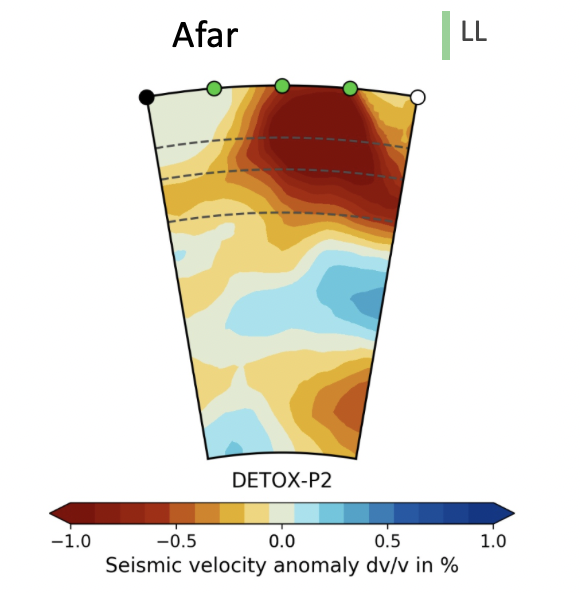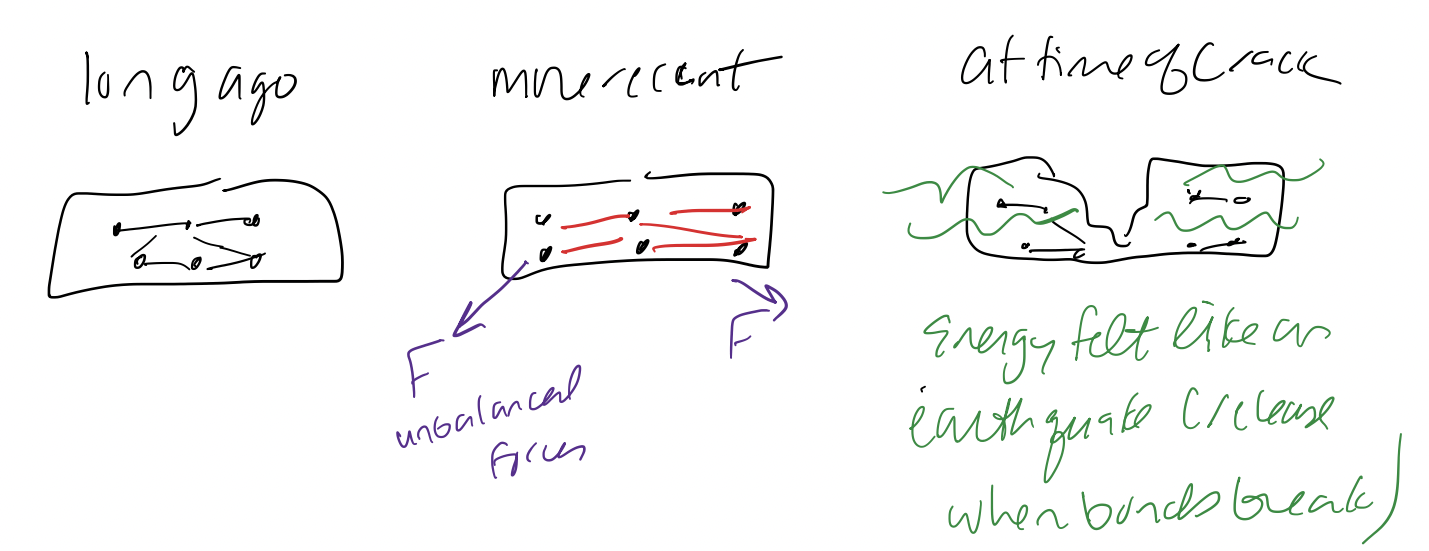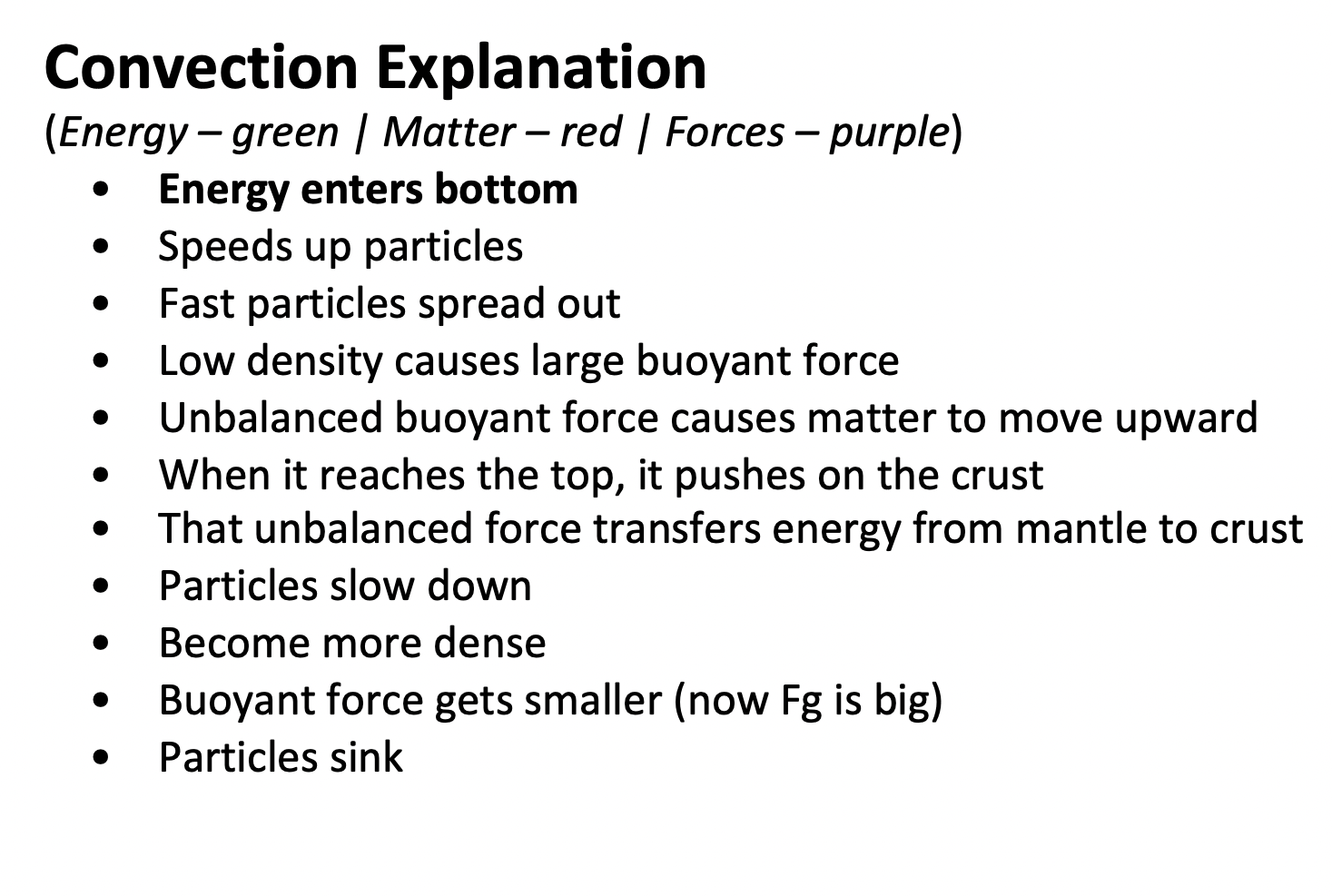physics unit 2
1/34
Earn XP
Description and Tags
Afar Africa: why did the crack form?
Name | Mastery | Learn | Test | Matching | Spaced |
|---|
No study sessions yet.
35 Terms
vector
a mathematical quantity that has a direction and magnitude. represented by an arrow.
magnitude
the size or amount of a quantity; for vectors, it’s the length or numerical value.
force
the push or pull on an object that causes a change in its motion.
plate boundaries
edges where Earth’s tectonic plates meet and interact (divergent, convergent, transform).
tectonic plates
large sections of Earth's lithosphere that move and interact with one another, causing geological activity such as earthquakes and volcanic eruptions.
sediment
particles of rock, minerals, or organic material transported and deposited by wind, water, or ice.
newton
the standard unit of force in the International System of Units (SI).
the force required to accelerate a one-kg mass at a rate of one meter per second per second (1N=1kg⋅m/s²)
stable
when forces are balanced; the object/system shows no net change in motion or position.
scale challanges this
free body diagram (fbd)
a sketch showing an object and all external forces acting on it as labeled vectors.
fg
force of gravity (weight), acting toward Earth’s center; (Fg = mg)
ff
force of friction, opposing relative motion between surfaces.
fpull
applied pulling force from a rope, hand, or another object.
fpush
applied pushing force from contact.
fair
air resistance (drag), a friction-like force opposite an object’s motion through air.
fn
normal force; support force perpendicular to the surface of contact.
velocity
the rate of change of position with respect to time. Common units: m/s, km/h; vector quantity.
net force
vector sum of all forces on an object; determines acceleration
compression testing machine
used to determine the compressive strength and other mechanical properties of rock samples by applying a controlled force until failure.
m - e - f
matter ⟶ energy ⟶ force
matter - nothing changes at rest (it is stable because the surrounding forces are balanced)
energy - can be stored or released, when it is transfered into matter, it caused the matter to change by unbalancing forces)
force - balanced (0 Fnet) or unbalanced (greater than 0 Fnet)
p wave
primary waves are produced after earthquackes that can travel through solids and liquids, they are a type of sound wave.
cannot pass through shadow zone
s wave
secondary waves are produced after earthquackes which can only travel through solids.
large shadow zone
earth’s layers
crust - outermost layer, the lithosphere (P, S)
mantel - thickest (P, S)
outer core - liquid layer (P)
inner core - liquid layer (P)
rigitity in relation to the mantle
how stiff or resistant a material is to being deformed or bent.
in the earth’s mantle, rigidity determines how rocks inside will respond to push + pull forces.
more rigid mantle: resists deformation + transfers seismic waves faster.
less rigid mantle: bends or flows more easily and slows the tranfer of seismic waves.
heterogeneuos
something made up of diverse and un-uniform parts
density
density is how dense the particles of matter are.
low density: allows for slow waves,
high density: allows for fast wavs,

mantle model
red: surface volcanic presance, likely earthquake prone
blue: mountains and hills, high density structures, earthquake prone
dark colours: major surface structures, plate boundaries (as a result of unbalanced forces)
light colours: few surface structures, solidly on a plate (balanced forces)
seismic waves
vibraions that travel through the earth caused by events like earthquakes and valcanoes. the two kinds are s and p waves.
elastic limit
the maximum stress a meterial can withstand by a force before it is permanantly deformed
permanant deformation
the irreversable change in the shape or size of an object that remains after the applied force is removed. occurs after stressed beyond elastic limit.

atom formation under afar
long ago (stable, forces balanced) more recent (three forces acting upon region, forces un balanced) at the time of the crack (elastic limit reached, ground pulled apart by forces, energy released)

gps plate direction map
shows the cm/year (magnitude, velocity, direction) that plates travel with vectors.
why is the mantle exerting
high vs. low density
high: cooler, once atoms’ energy is transfered from into the crusts’ atomic bonds the slow atoms begin flow closer together, and are pushed down by the Fg.
low: hotter, excited atoms thin out as they are moved up by the Fbuoyant Force (which is stronger than the Fg)
convection
the transfer of heat through the movement of a liquid .
convection test question
draw model , elastic limit , mef how it plays a role
